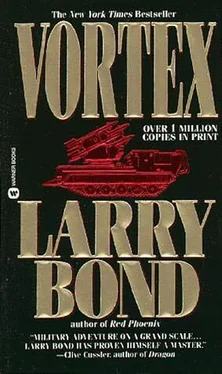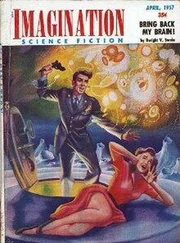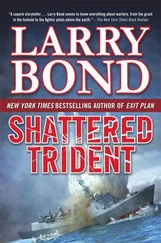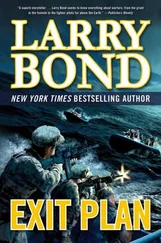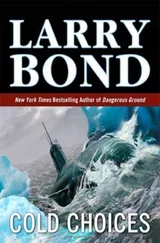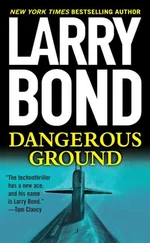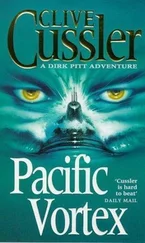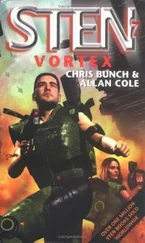Skuller continued to listen on the headphones and report to his crew while he supervised the gun’s firing. Dassen, in his observation bunker, was calling the fall of shot, making adjustments, and informing his surviving crews of the results. Isolated in rock holes, with only a small sighting telescope for each gun, they needed the big picture to do their best.
The picture wasn’t improving. Dassen had reported three hits, so far, and several near-misses, but without visible effect. The Afrikaner gun crews were beginning to realize the power of the floating fortress that had decided to attack them.
Another salvo from the battleship rocked the mountain, and Skuller heard a scream on the line.
“We’ve lost E Gun.” Dassen didn’t elaborate further.
The cracks in the ceiling continued to grow. They were clearly visible now, if only Skuller had taken the time to look up.
Forty seconds later, nine more shells arrived, streaking in at more than 1,900 feet per second. Each an nor-piercing projectile weighed 2,700 pounds and bored thirty feet into the hard rock before exploding. Adding to the tremendous kinetic energy already possessed by each shell, 4,500 pounds of
TNT detonated in nine separate explosions, sending pressure waves surging outward through the rock.
One shell slammed into the cliff just ten meters away from C Gun and almost directly overhead. The shock was strong enough to rattle the gun on its rails. Without the locks holding it in place, the G-5 would have leapt off and smashed into one of the tunnel walls.
Thrown to the floor by the pounding, deafening impact,
Skuller and his men scrambled to their feet and raced forward to check their weapon for damage. But as the sergeant bent over C Gun’s delicate sighting mechanism, a small piece of rock pattered off his shoulder. As he looked up at the ceiling, reacting to the impact, a second chunk rattled off the gun barrel, followed immediately by a third. Realization came, and on its heels, panic.
He ripped off his phone set.
“Out! Get out, now!”
But as he looked up to see how much time they had, the web of cables and pipes overhead was already falling-torn from the ceiling by man-sized chunks of rock. Skuller managed just two steps before his head and chest were crushed. Only Private Hiller made it to safety to report on the fate of C Gun and its eight-man crew.
USS MSCONSIN
“Sir, the gunnery officer reports no firing from the mountain for five minutes now.”
“Very well. Cease fire.” A rolling blast from the battleship’s three gun turrets punctuated Malloy’s order, and the talker quickly relayed his command before the guns were reloaded.
The last wisps of gun smoke trailed away, and Malloy took a deep breath.
It would be a long time before the acrid powder smell was out of his nose, or his clothing. But he had other things to worry about right now.
He turned from the bridge windows.
“Navigator, course to the mountain?”
“Zero eight three, sir.”
“Helm, steer zero eight three. Indicate flank speed. Director, keep mounts one and two trained on the target. ” Malloy wasn’t going to give
Table Mountain’s defenders a chance to surprise him. He planned to run in fast. The Wisconsin would take station ten thousand yards off the beach. If anyone on the mountain fired again, he’d give them all nine guns at point-blank range.
Besides, his job wasn’t finished yet.
Malloy looked away from the gyro repeater to see Craig
studying the mountain. Dust and the smoke of fires started by their bombardment still obscured most of its heavily scarred surface. The Navy captain raised his own binoculars to the area.
Men and vehicles were visible between the columns of smoke, advancing slowly up the mountain along winding roads-Taylor’s Cape Province infantry were making their assault.
There were still defenders up in the tunnels and bunkers, though. The
Cape troops were moving slowly-pinned down from time to time by heavy machinegun and rifle fire. Even without its heavy guns, Table Mountain would be a tough nut to crack.
“Sir, lookouts report aircraft approaching from astern.”
Craig and Malloy stepped out onto the bridge wing to watch as a cloud of aircraft appeared over the horizon. As they closed, Malloy identified them as Marine Ospreys. The amphibious assault ship Saipan had launched two dozen Ospreys carrying two companies of U.S. Marines. The tilt-rotor aircraft were headed for the top of Table Mountain.
A flight of four AV-8B Harriers screamed past the battleship. Loaded with bombs and gun pods, they would hit any remaining defenders on top of the mountain-covering the LZ while the Marines landed.
Malloy’s grim smile matched Craig’s. Caught between two advancing forces, with the Wisconsin’s guns and Marine fighters in support, the Afrikaners would have nowhere to go. They’d have to surrender-or die in place.
For all practical purposes, the battle for Cape Town was over.
DECEMBER I O-TRANSIT CAMP, 101 ST AIR ASSAULT DIVISION, NEAR THE D.
F.
MALAN INTERNATIONAL AIRPORT, CAPE TOWN
The Marine helicopter touched down in a cloud of hot dust and wind. Its rotors were still turning as Lt. Gen. Jerry Craig,
flanked by his chief of staff and intelligence officer, jumped from the machine and marched over to a knot of men waiting near a long barbed wire fence. Craig noted that there were Marines, Army personnel, and South
African soldiers present. He hoped that was a good sign.
“Good morning, sir.” The senior officer, an Army lieutenant colonel, saluted, and Craig returned it quickly, still walking. The officer, a slim man with a carefully trimmed crew cut and a small scar on his chin, fell in beside him.
Ahead lay a massive tent city, still growing if the frantically working construction teams were any indication. Some men were erecting tents while others built more-permanent structures-mostly prefab hangars and maintenance sheds for the 101st’s helicopter fleet. Other troops were digging emplacements for heavy weapons at regular intervals along the fence line-an action prompted by last night’s incident.
“Over here, sir.” The party followed the fence line to a stretch of wire that had a six-foot gap cut in it. A row of bodies lay off to one side, covered by a green, Army-issue tarpaulin.
As Craig’s group approached, a young Army private standing near the fence came to attention and saluted. The lieutenant colonel nodded in his direction.
“This is PFC Moffett, General. “
Then he turned to the private.
“At ease, Moffett. Tell the general about last night.”
Clearly nervous in the presence of so much rank, Moffett tried his best to report.
“Sir! I was assigned the midnight to-oh-four-hundred guard post last night, the ninth of December, when I detected unauthorized personnel near the fence. When I ordered them to halt, they engaged me with unauthorized small-arms fire. So I was forced to return fire while calling for the corporal of the guard.”
Craig fought down a sudden grin.
“Unauthorized” small arms fire? He’d have to remember that one.
“Good work, son. You did the right things at the right time. Were you nervous?”
The private relaxed slightly and turned his head to look at
Craig.
“Nervous, sir? I was scared shitless!” Suddenly remembering whom he was speaking to, he braced, exclaiming, “Oh, fuck! I mean, excuse me, sir!”
Craig’s grin broke out into the open.
“Don’t worry, Corporal. We need men who do their job even when they’re scared. ” He glanced at the Army officer beside him.
“I think we can forgive Corporal Moffett’s language, this time.
We need NCOs who can think on their feet. Right, Colonel?”
Читать дальше
